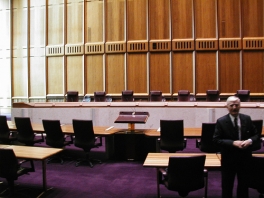Do-it-Yourself Litigation Funding for Class Actions Accepted by Federal Court but Challenged by ASIC

SYDNEY: 27 May 2013 Michael Legg and John Emmerig
Third party litigation funders may see their current stranglehold on the lucrative class action market start to weaken after the Federal Court (in Richards v Macquarie Bank Limited [No 4] [2013] FCA 438) approved a 35% uplift in recovery for group members who self-financed the cost of prosecuting their class action, over those that did not. The uplift was designed to reward the self-financiers in a manner akin to the return an external funder would have taken had one been involved.
A group of about 1050 members, who on advice from Storm Financial Limited (now in liquidation), borrowed money in the form of margin loans from Macquarie Bank, and then used that money to invest in one or more of nine managed investment schemes, sued Macquarie for their losses. Macquarie paid $82.5 million (or 30.57% of the losses claimed) to settle the class action which required court approval.
As part of the court approval, the applicant sought a “funder’s premium” of 35% for those group members who co-funded the litigation. This meant that group members who contributed to the legal costs and disbursements involved in running the class action recovered 42% of their losses, while those who did not contribute only recovered 17.602% of their losses. The percentage used was determined by reference to the range of premiums which one sees afforded to third party litigation funders in respect of class actions. Due to the novel nature of the “funder’s premium” the Australian Securities and Investment Commission intervened in the proceedings.
Despite ASIC’s concerns about the size of the “funder’s premium” and whether adequate notice had been given to group members of the uplift, Justice Logan found the “funder’s premium” to be fair and reasonable. His Honour relied heavily on those cases which rewarded creditors who chose to contribute to litigation undertaken by a liquidator, so as to recover moneys owed to a company in liquidation in the course of the winding up of that company. The group members had taken on the risk that they would throw good money after bad in seeking a recovery from Macquarie – the “funder’s premium” was allowed in recognition of that risk.
The approval of a premium for group members who fund their own class action is likely to reshape the litigation funding market and provide another way to fund class actions.
Group members now have a way to fund their own proceedings so that they, and not a third party litigation funder, recover a premium for taking on the risk of litigation. Indeed there may be an incentive for some types of litigants, such as institutional investors, to pool their resources and sue without a funder. It may also mean that smaller class actions which do not interest third party litigation funders are now more viable. However, at the heart of this funding model is that a subset of group members are treated less favorably and recover less compensation.
There are key differences between third party litigation funding and the premium approved in the Storm class action. The group members in the Storm class action were not at risk of an adverse cost order (ie paying an opponent’s costs if the case fails), only the applicant was, due to the operation of the class actions legislation. Third party funders usually indemnify an applicant against an adverse costs order meaning that the applicant is protected and the funder has funds at risk. The greater risk means the funder has an incentive to undertake due diligence and even perform a management role to assist in the case being successful. Under the Storm class action model, due diligence and management falls to the lawyer for the applicant and funding group members. Significantly though, the lawyer does not have funds at risk. The lawyer gets paid regardless of whether the case succeeds. Consequently, the Storm class action model also differs from the traditional lawyer funded approach to legal proceedings of no win – no fee.
It may be that this dispersion of risk could prompt the pursuit of cases with lower prospects of success which will increase the frequency of class actions. While respondents usually have little interest in how claimants recoveries in a specific case are divided up once a settlement is reached, the Storm class action model suggests that there is a need to consider how various funding models may impact the volume of class actions at a more macro level.
The Storm class action model is not the only new development in funding. Law firm Maurice Blackburn has created its own litigation funder which will give rise to a number of challenges and opportunities as lawyers seek to both be paid legal fees and have a related entity take a percentage of any recovery. Interest has been shown in a version of the US approach of a common fund whereby the court determines the percentage that will be taken from all group members’ recoveries and paid to the lawyers as their fee. In Australia the percentage could be paid to the litigation funder. Litigation funders may seek to partner with group members so that the funder takes a cut and the group members who contributed to legal costs take a cut. The models for funding are likely to continue to develop.
On 24 May 2013 ASIC announced that it had appealed the decision in Richards v Macquarie Bank Limited [No 4] [2013] FCA 438.


Add new comment